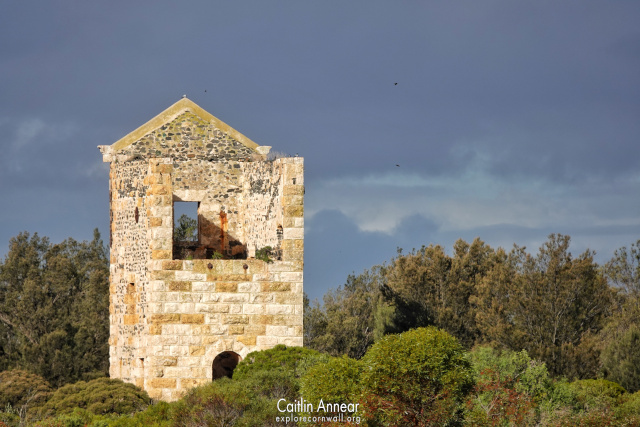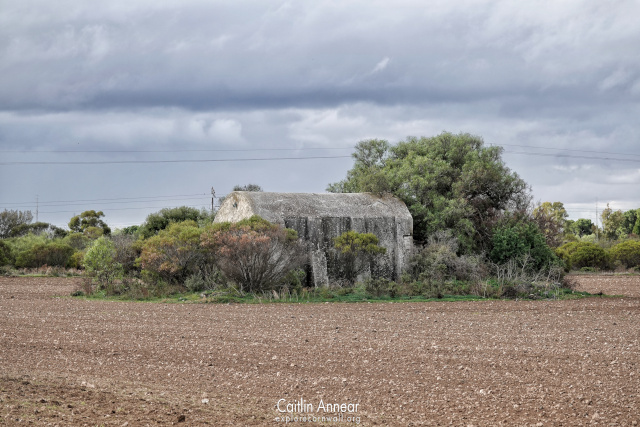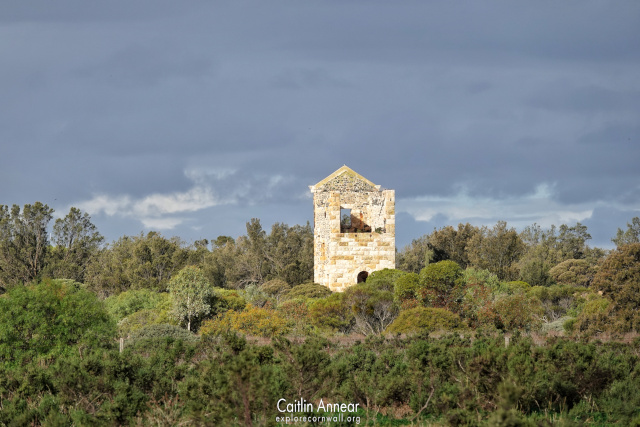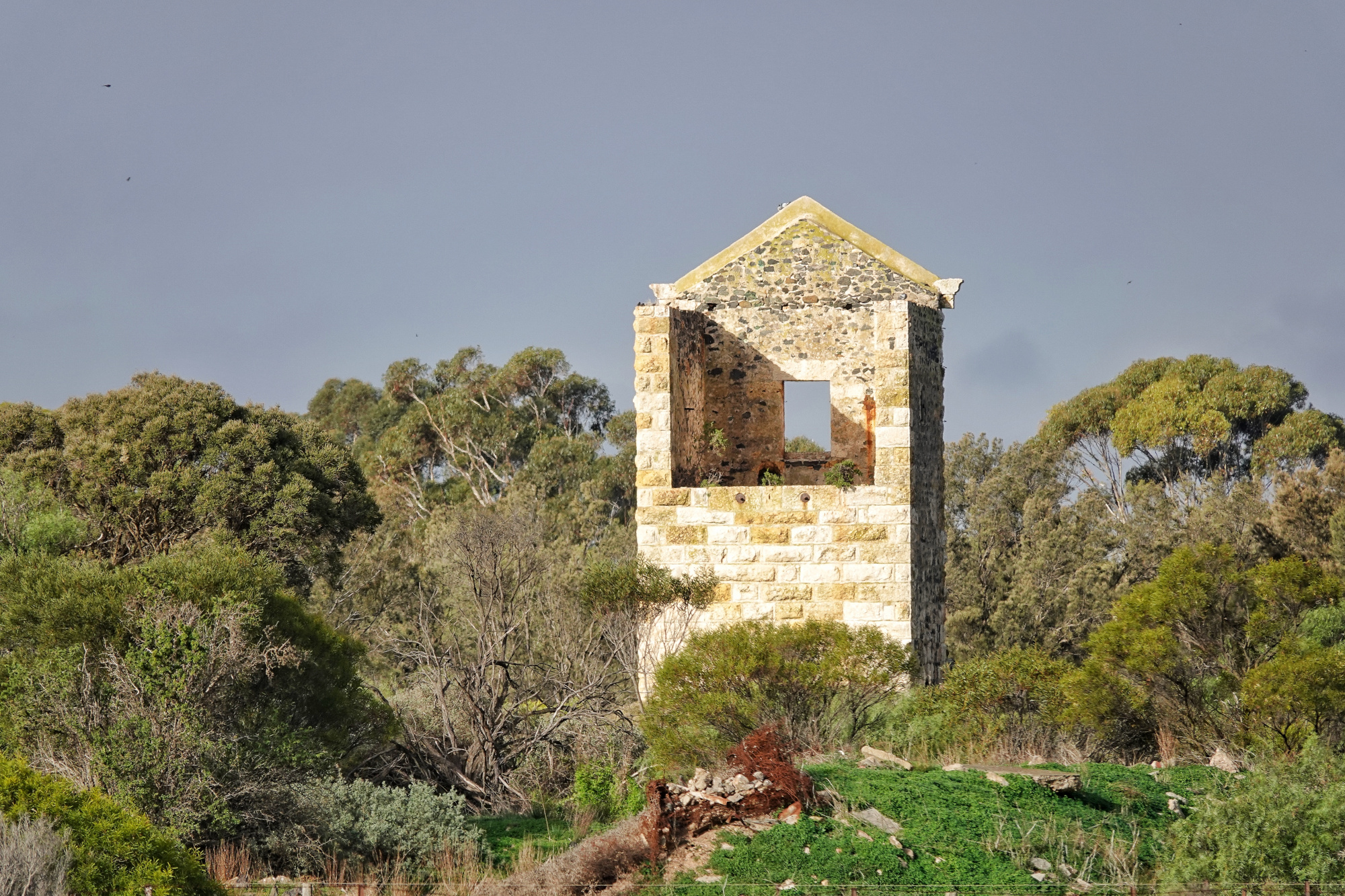On the Yorke Peninsula are the scant remains of Wallaroo mine, the mine that started the third South Australian copper rush after Kapunda in 1842 and Burra in 1845. Copper was discovered here in 1859 after local shepherd James Boor spotted it while herding his sheep. Land owner Walter Hughes quickly secured the mining lease and opened the Wallaroo Mine, naming it after a sheep station with the same name that he also owned. By February of the following year work had begun around what would later be Home shaft by four miners.

Within a year, 150 men were employed at the venture and the neighbouring town of Kadina had been gazetted in 1861.The discovery of this copper added some financial stability for South Australia which at this time was going through a period of depression.
The peak for the mine was between 1870 and 1876, employing over 1,000 individuals and having five Cornish engines at work. Unfortunately copper prices began to dip in 1878 and activity began to decline with it. Despite this, the railway was still extended from Adelaide, improving the connectivity of the region. In 1899 nearby Matta Mine was incorporated into Wallaroo; this venture started work in 1863 but had ongoing water problems.
In 1890 the mine amalgamated with its neighbour Moonta Mine. The joint venture struggled on, with the Moonta section focusing on shallow levels and the installation of a new leaching plant. In 1904 a fire broke out underground at Taylor’s shaft, trapping miners until volunteers managed to control the flames and rescue them. No one was killed, but several miners suffered from smoke inhalation. The mine managed to continue on for a little longer, closing for good in 1904.

Engine Houses
The mine had a number of engine houses over its lifetime. The first was a 12″ whim and stamping engine in 1861, quickly followed by a 24″ pumping engine just a year later. A larger engine was installed on Taylor’s shaft; this was a 60″ engine built in 1863 and was the location of the 1904 fire, with the engine being replaced with electric pumps. In 1876 two new engine was erected, another 60″ pumping engine on Harvey’s shaft made by Harvey & Co and a 48″ engine on Hughes. Hughes shaft also had a man engine installed at some point, the only one in the southern hemisphere.
Lastly was Elder’s 80″ pumping engine, a second hand engine made by Harvey & Co for the New Cornwall Mine for £30,000. This venture collapsed in 1887 and the steam engine was sold to Wallaroo for just a tenth of the price, stones and all. There were three other engine houses built at some point, all were whim engines on Young’s Taylor’s and Office shafts.

Shafts
Shafts on the mine include Robinson, Hosking, Elder, Home, Hancock, Smith New, Weighbridge, Harvey, North Hughes, Higgs, Hughes, Richman, North Mair, Mair, Youngs, Old Engine, Matta, Stirling, North Young, Boors and Office.
There is no access to this mine site anymore and it has all been fenced off. The remaining engine house can be viewed from the road.
Bailey, H. K. (1985). The Wallaroo Mine. The National Trust of South Australia.
Nance, D. (2019). Cornish Beam Engines in South Australia: Kapunda, Burra, Wallaroo and Moonta. International Stationary Steam Engine Society, 39(1).
Payton, P. (2020). Pictorial History of Australia’s Little Cornwall (2nd ed.). Wakefield Press.
